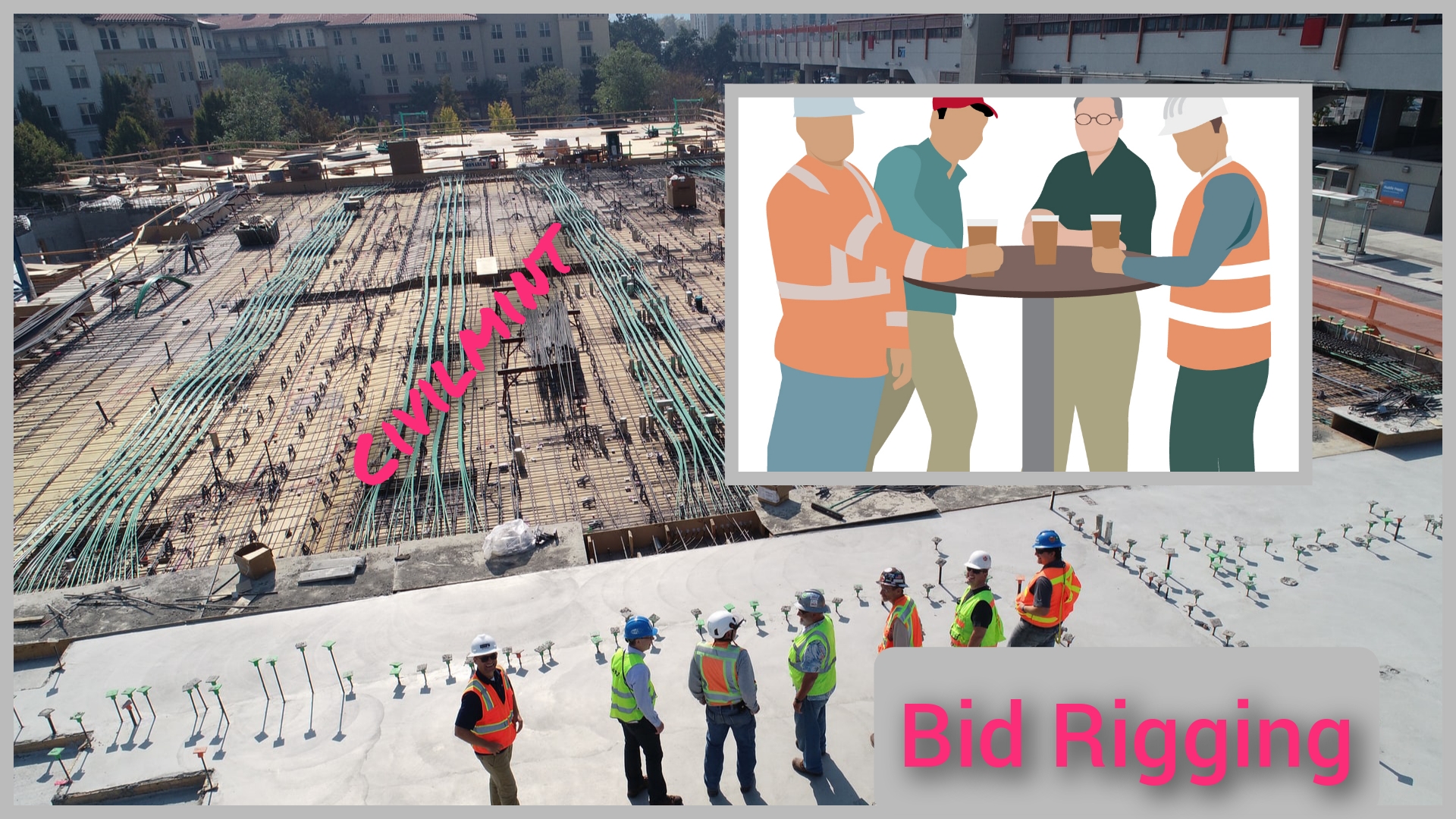Bid rigging is bad practice to enhance the cost of the tender.

Table of Contents
Bid Rigging Definition
Bid rigging is an illegal practice in which two or more contractors agree not to compete with each other in a tendering process.
Description
This type of collusion artificially inflates the prices of the goods or services being procured, ultimately resulting in higher costs for the buyer or organization issuing the tender.
I also advice to read my article on bidding process.
Bid rigging is considered a form of anti-competitive behavior and is illegal in most countries around the world.
Sometimes it is difficult to detect bid rigging because no one knows about the agreements between the contractors.
Example Of Bid Rigging
Let’s say a government agency wants to build a new Railway Station and asks construction companies to submit their bids for the project.
Some construction companies decide to cheat by working together. They agree to submit higher bids than the project is worth, and one company will submit a low bid to win the contract. This way, they can ensure that they all make money, even though the project will cost more than it should.
When the government agency checks the bids, they realize that they’re all too high, except for one.
This makes them suspicious that something fishy is going on. They investigate and find out that the construction companies colluded to rig the bidding process.
As a result, they cancel the tender and start a new process to ensure fairness. The companies involved in bid rigging may face legal consequences.
Types Of Bid Rigging
There are various types of bid rigging. I have described all the major forms of bid rigging.
1. Bidder Exclusion:
Bidder exclusion allows project officials to essentially choose their preferred bidder.
There are multiple methods to achieve this, including instituting unreasonable qualification parameters, excluding non-preferred firms, or effectuating the same by shortening the time of acceptance periods for new bids following a request.
Advertising projects to select bidders or bidding markets, thereby reducing publicity of bid procurement, bundling of contracts to exclude bidders, coercion, intimidation, and the simple rejection of individual bids over trivial matters can also be used to exclude bidders.
2. Purchase Splitting:
Purchase splitting is a form of bid rigging that aims to reduce the minimum bid amount.
This practice functions by splitting up contracts to reduce the actual procurement amount and keep it under a threshold value.
This reduces competitive bidding and enables less oversight at the project level as bid prices drop, and kickbacks can be allotted.
3. Leaking of Bid Information:
Leaking of bid information involves a relationship of some degree between the project and a bidder, as the bidder is handed information to gain an unfair advantage.
This practice is illegal and unethical as it undermines the principles of fair competition.
4. Bid Manipulation:
Bid manipulation is another method for officials to choose the bidder of their choice but occurs after receipt of bids.
The methods for this would include either changing bid parameters, evaluation processes, or other activity to effectively select the bidder of choice.
Bid manipulation undermines the integrity of the bidding process and is considered illegal and unethical.
5. Rigged Specifications:
Rigged specifications allow more bidder exclusion by officials by either tailoring requests to individual bidders or creating a vague criterion to reasonably choose a preferred bidder.
Rigged specifications are designed to exclude bidders that officials do not prefer and undermine the principles of fair competition.
6. Unbalanced Bidding:
Unbalanced bidding involves high bid prices for commencing phases of development and low prices for later stages.
This practice effectively increases the flow of funds for the bidding firm.
This occurs when bidders cite high prices for items intending to raise the number of units and purchase them at a competitive rate while simultaneously skimming profits from the artificially high bid price.
How To Stop Bid Rigging
Fighting bid rigging is an ongoing effort that requires constant attention.
One effective way to prevent this type of market manipulation is to promote a diverse pool of bidders. This helps to ensure that bidding contractors will compete with each other fairly and submit competitive bids.
It is important for the bid procurement team to be knowledgeable about the potential for bid rigging and to remain vigilant for any red flags that may indicate bid rigging is occurring.
Communication with all contractors should be consistent throughout the process to promote transparency.
It is crucial to remain vigilant and take action if any suspicious activity is detected.
By promoting transparency, encouraging diversity in the bidding pool, and being alert for red flags, bid rigging can be prevented and fair competition can be ensured.
FAQ
Yes.
